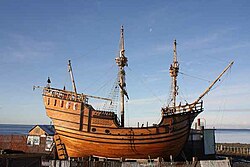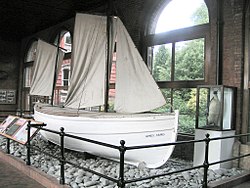 Nao Victoria Replica in the museum | |
| Established | 2011 |
|---|---|
| Location | Punta Arenas, Chile |
| Type | Maritime museum |
| Website | https://www.registromuseoschile.cl/663/w3-article-83699.html |
The Nao Victoria Museum is a private maritime museum located in Punta Arenas, Chile. It has been open to the public since 1 October 2011. The museum offers interactive displays featuring replicas of the ships that contributed to the discovery of the area, helped colonize the territory, or had a special and historic heritage significance for the Magallanes Region of Chile. The replicas were built using traditional shipbuilding techniques.
Contents



























